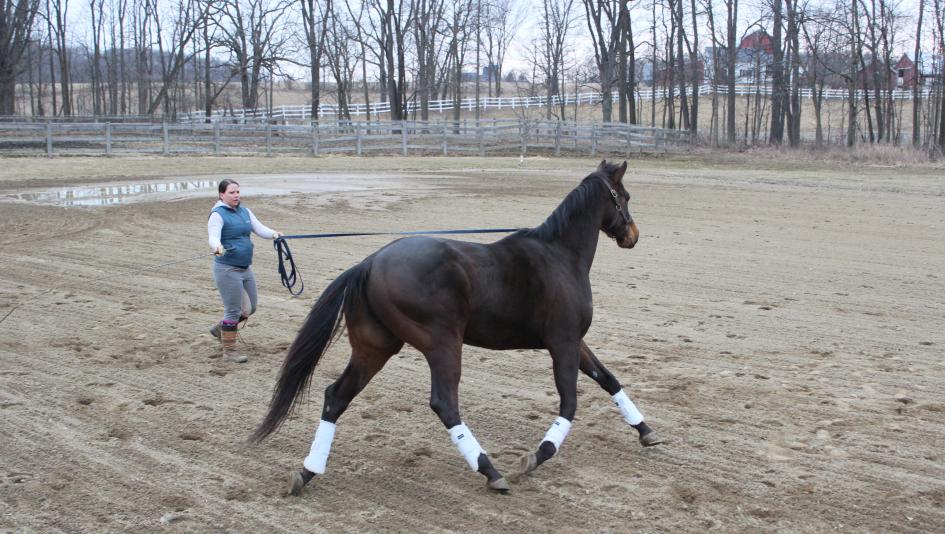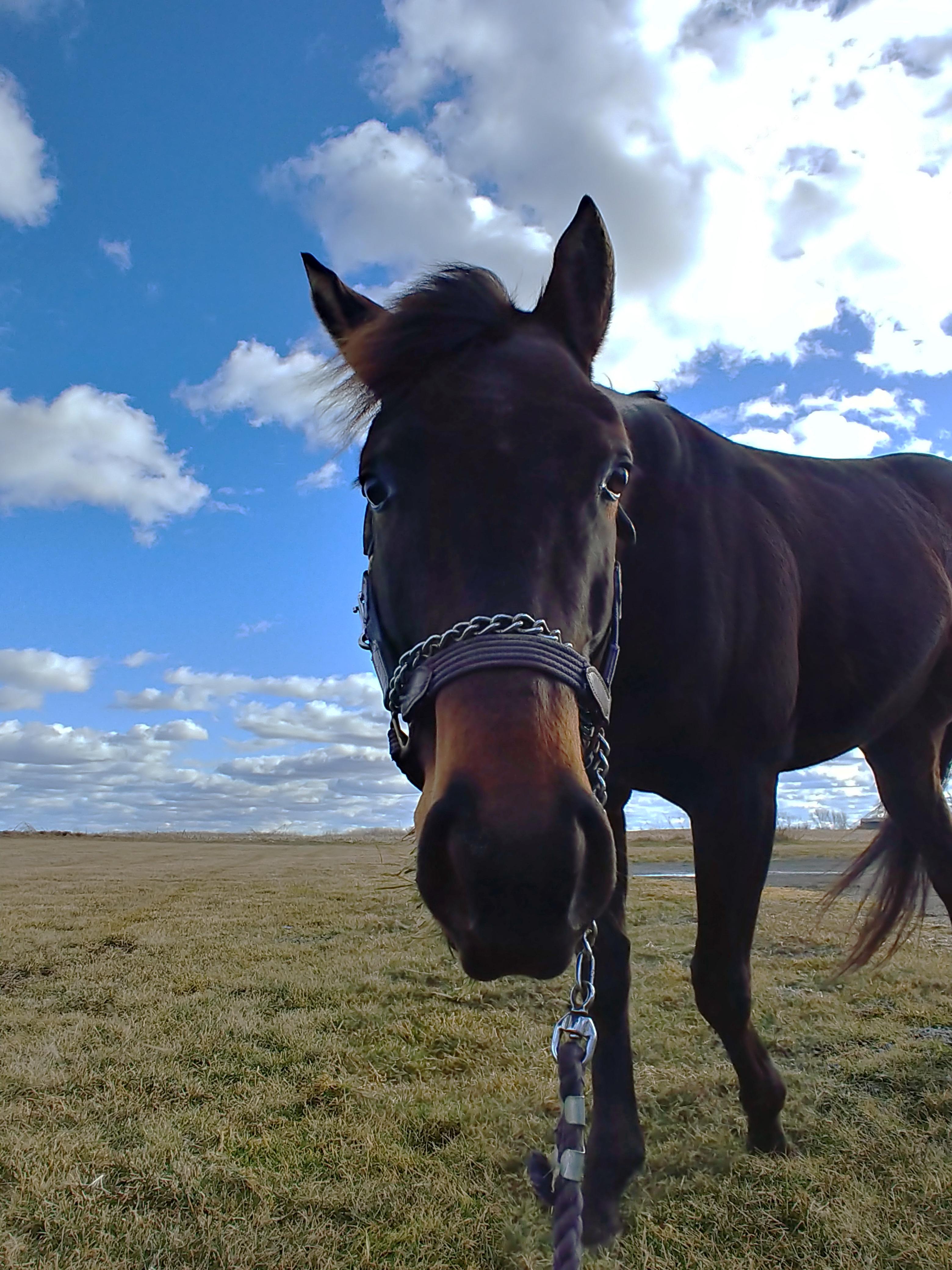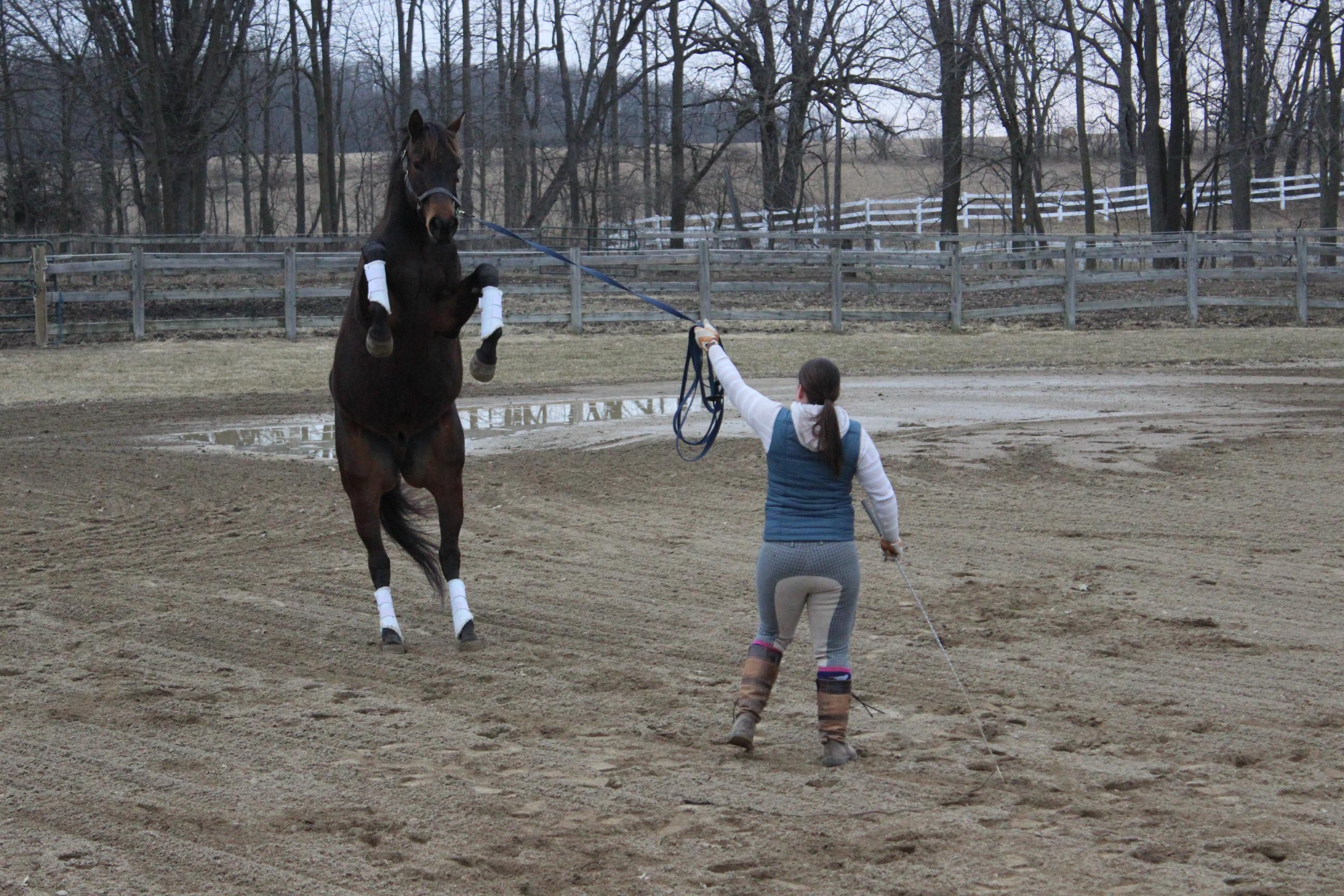
Richard Mandella: A Lifelong Horseman Who Crafted a Hall of Fame Career

This year, America’s Best Racing and the Retired Racehorse Project will be sharing diaries from several trainers preparing for the 2019 Thoroughbred Makeover competition, scheduled for Oct. 2-5 at the Kentucky Horse Park. This week we check back in with Michigan resident and lifelong Thoroughbred lover Jessica Sheidy, who shares an update on Wex's progress and a challenge they've encountered. You can read her intro piece here.

Thoroughbreds are not for the faint of heart. Not because they are “crazy” or “hot,” but because they will take you on a roller coaster ride. I love Thoroughbreds for their personality, their athleticism, and their spirit. But, they will take you on an emotional ride. You will feel the highs of working hard to achieve each milestone, and the lows of mystery lameness and unexpected vet bills.
With Wex, I’ve experienced some of the emotional highs. I’ve never had a horse that comes to me when I call him from the pasture, but Wex seems genuinely excited to see me. (Maybe it’s the peppermint that he knows I have, but don’t ruin this for me.) There are tiny victories, like walking over the pole on the ground that was absolutely terrifying a week ago.
There have been lows, too. When I started my training with Wex in December, I anticipated lots of baby racehorse antics. He has energy to spare and often needs help focusing. What I didn’t anticipate is discovering a vice that has made progress of any kind difficult, to say the least.
My horse rears. I’m not talking about the graceful “Hi ho, Silver” move and we gallop off into the sunset. He will stand straight up from any gait, with little warning. Rearing is generally not a desirable talent, and it can be extremely dangerous. If a horse stands up too high, he could go over backwards, and that is bad news for both him, and the unlucky sucker that happened to be riding at the time. For many riders, and even professional trainers, rearing is a non-starter.
The first step in figuring out this behavior is to rule out pain. My primary veterinarian was first on the list, but ruling out pain can and should also include checking saddle fit, and having a chiropractic evaluation. My vet watched him go on the lunge line. His first words were, “He sure is athletic.”

Wex is sound and my vet couldn’t find any obvious signs of pain. Up next, we’re heading to Michigan State University for a full work up, and radiographs. If I’ve learned anything in my years of working with Thoroughbreds, it’s that they will work through pain if you ask them to. Rather than keep asking him to push through pain, and fight through the rearing issue, the least I can do for him is to make sure he’s not hurting.
If the doctors at MSU don’t find any cause for pain, I will turn to my trainer to treat this as a behavioral problem. My trainer is amazing with young horses, and has more patience than I could ever hope to have. I’m confident she can guide us through this, in the end.
They say it takes a village to raise a child (I have two human children, and I can attest to this). I think it takes a village to raise a Thoroughbred. I often tell my kids to “use your tools.” Wex and I are not in this by ourselves. I have tools at my disposal. A community of veterinary and training professionals, and a support system of experienced Thoroughbred owners, that has grown larger as I’ve embarked on this RRP Thoroughbred Makeover journey.